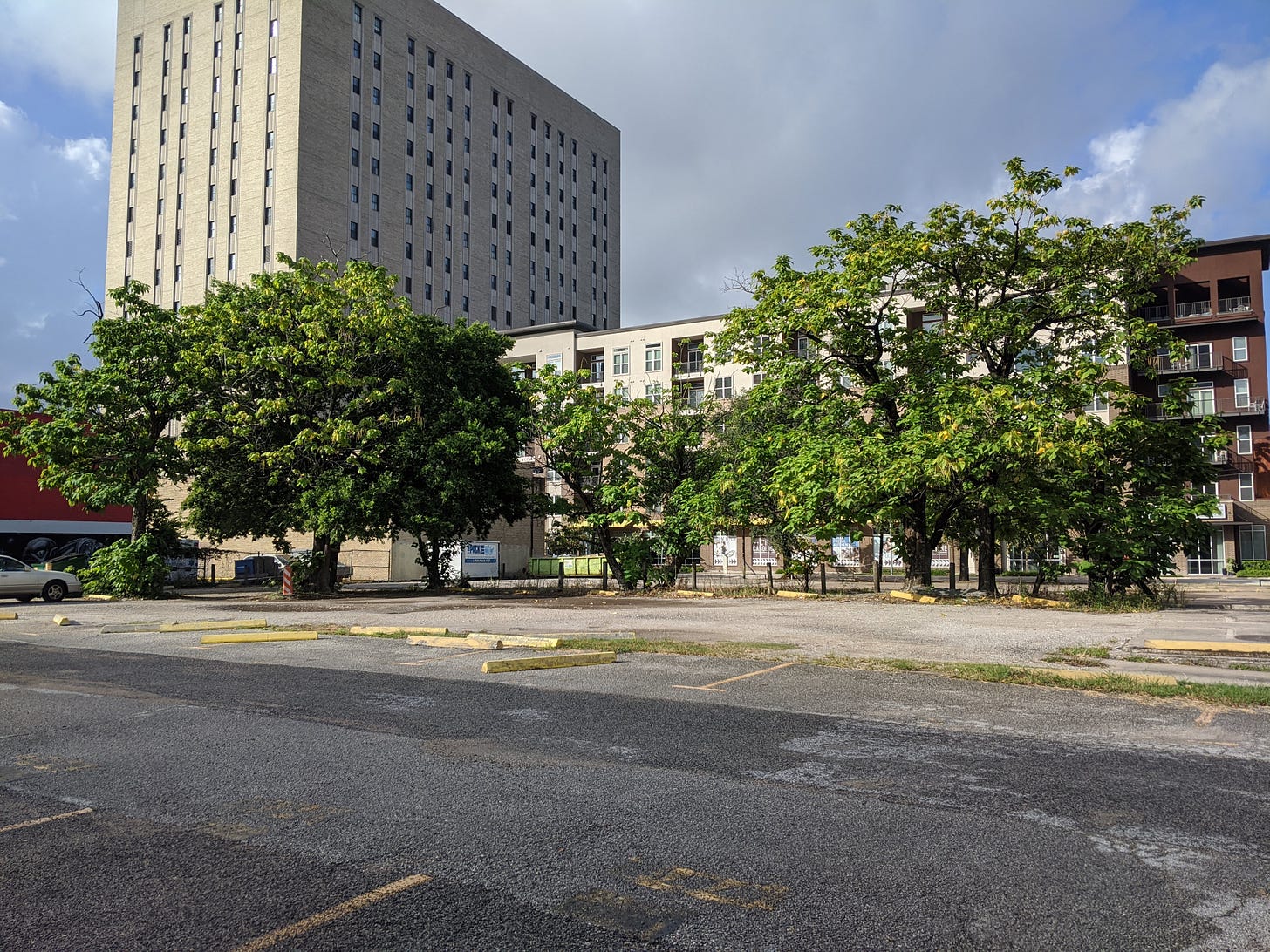Sustainability isn’t sustainable. It implies that the goal of environmental work is to insure a balance between human greed and the health of the biosphere that is similar to the present, only extended indefinitely into the future. The current status quo is unbearable. Sustainable design optimizes human systems to have as small of an impact on the surrounding environment as possible. This approach to re-designing institutions ignores that human systems are and will be deeply embedded in natural systems for the foreseeable future. We humans must learn to participate in and thrive with nature, rather than merely tolerate it. We won’t be long for this planet otherwise.
Conservation is zero-sum. It presumes that the best we can do for our wild lands is to isolate and protect what remains of them in the present. It deems the wild lands we view in the present as the only ones worthy of support and doesn’t recognize the possibility of these ecosystems evolving on their own, often on aesthetic grounds of what we deem to be “natural” or not. It presents a pessimistic vision of the future, where humans are destined to destroy what few relatively unexploited ecosystems are left unless we are stopped. The possibility of a genuine flourishing of an rejuvenated biosphere alongside a rehabilitated humanity is left as an unrealistic pipe dream.
Restoration is atavistic. It conjures up a vision of the resurrection of ecosystems destroyed by previous generations of humanity, like the Pleistocene steppe or the European rain forests, in their former domains. This is a flawed approach. The idealized systems of the past did not evolve to persist in a world with a major human presence as evidenced by their collapse once megafauna populations were hunted to extinction. To naively re-create them in their past landscapes would necessitate constant human intervention, otherwise they would die out again. This is not the way to support a self-directing, thriving biosphere in the future.
Fragile systems become weaker when exposed to stressors. A fragile system you are familiar with is the phone, or computer, that you are reading these words on. If you decide to smash your phone against the ground with all of your strength there is not much of a chance that it will still be operable. Too much volatility, whether it be in the form of a rapid drop to the floor or a swim in the pool, destroys it. Too much stress is detrimental to a fragile system. There is no upside. What is non-living can’t re-configure itself in response to being mishandled.
Resilient systems are unaffected by stressors. They don’t improve but they also don’t collapse. An example of a resilient system in the modern is your average mountain. On multi-million year timescales, the interplay between erosion and tectonic uplift controls the height of mountains. In this long view of things, they are responsive to stressors in the form of changes in climate and earth interior processes. On short timescales, nothing really affects them. Nothing we can do will significantly change the height of the mountains we see today.
Antifragile systems become stronger when exposed to stressors. Life is the quintessential example of an antifragile system. When living populations encounter the unknown, they react in a way that allows them to get better over time. Weak individuals are weeded out while those that can thrive in the new circumstances survive into the future, benefiting the population as a whole. Evolution works by exploiting the antifragility of life. It doesn’t matter what stressor they are exposed to, they are able to adapt and become stronger regardless.
The terms I criticized earlier in this post suggest that nature is, at best, resilient and, at worst, fragile to stressors. They miss the crucial point that since life is antifragile, it gains from being exposed to uncertainty (up to a point). Antifragile systems need to be shaken up in order to thrive. To isolate natural systems from the outside world completely, as is the goal of some conservationists, is to smother them. It is not good enough for ecosystems to be preserved in its present state. The wild has to adapt to the times, otherwise it will be snuffed out.
Nature is dynamic, not static. Ecosystems are in a constant state of flux. There are always novel plants, animals, microbes, fungi that cycle in and out of the ecology in response to external and internal changes. The idea that the current makeup of modern ecologies should be protected at all costs and from evolving in response to external stressors, is a flawed undercurrent of modern environmentalist thought. We should not force the natural world to appear how we want it to appear. All that leads to is death.
An antifragile environmentalism recognizes that the natural world needs to be able to react to stressors and become stronger as a result. We can and should set up boundaries so that the remaining wild lands we have are protected from the excesses of human greed (i.e. strip mining, clear-cutting forests, dredging ocean floors). We also need to recognize that humanity is not going away anytime soon and should recognize that the biosphere that will evolve alongside us will fit to our preconceived notions of what it should look or feel like. Evolution is ongoing.


